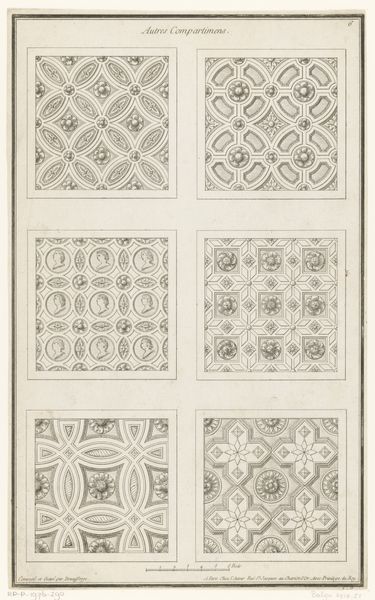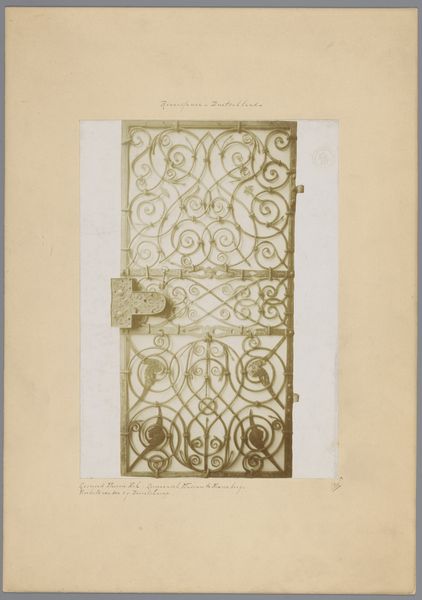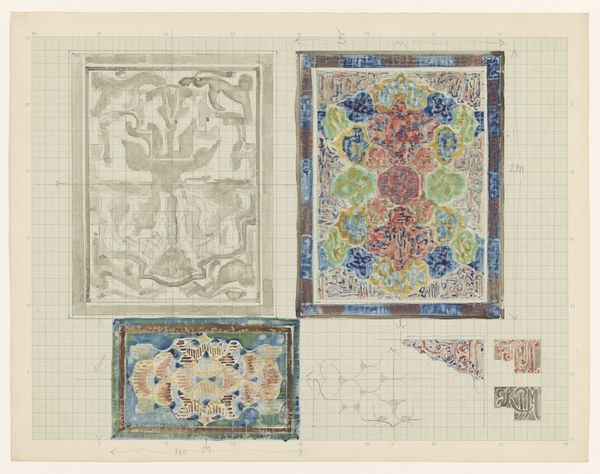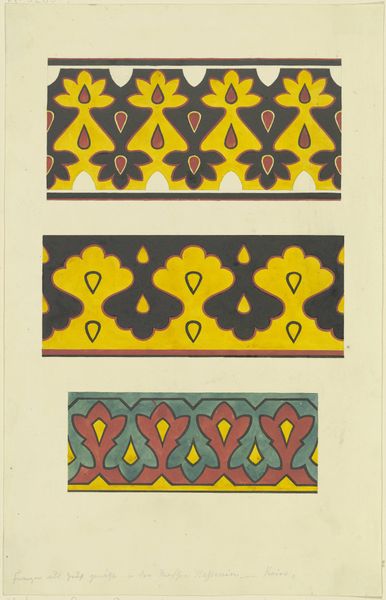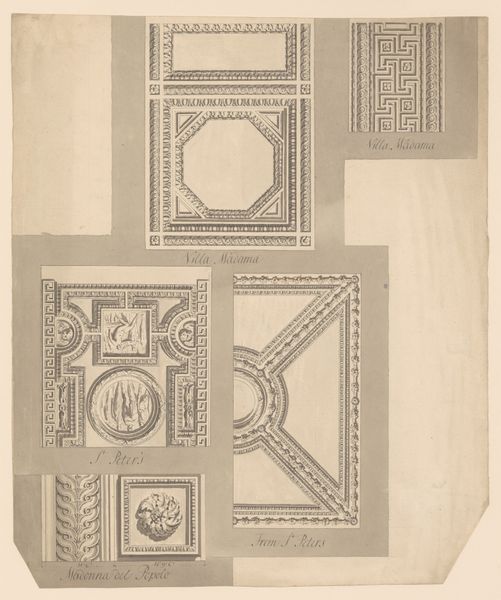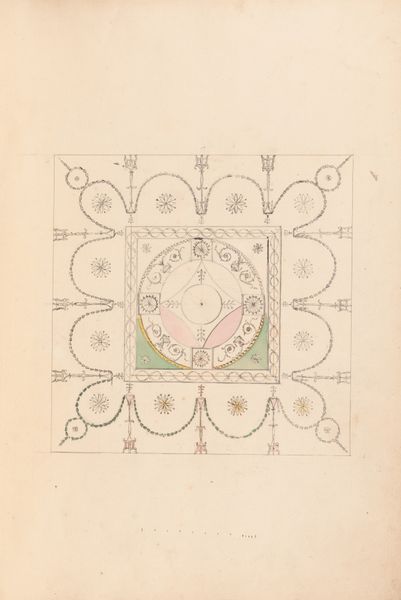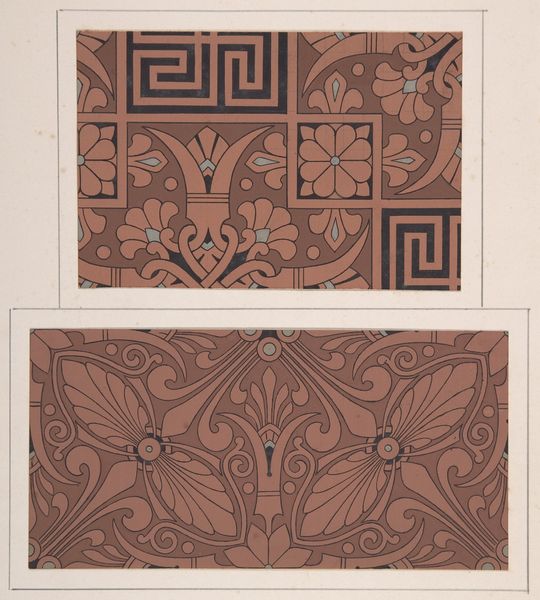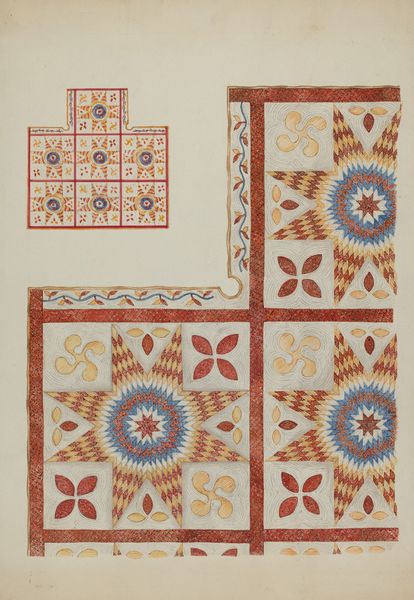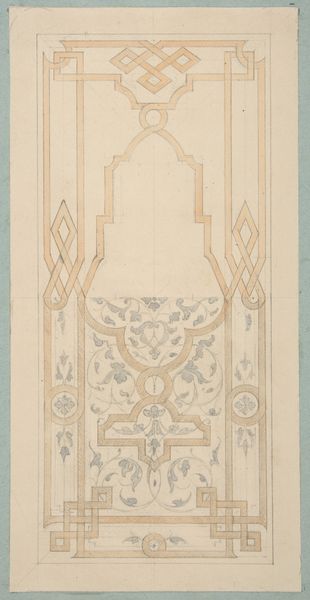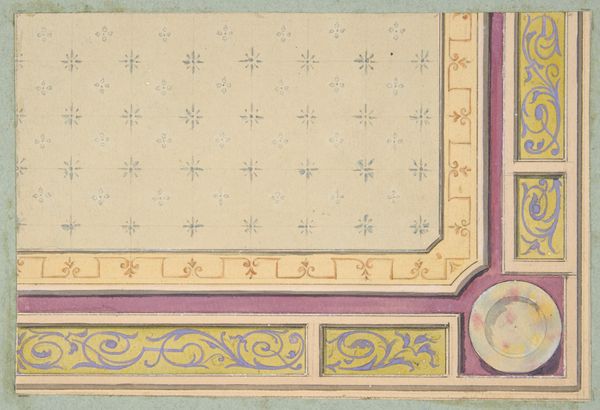
drawing, mixed-media, ornament, paper, ink
#
drawing
#
mixed-media
#
ornament
#
pattern
#
paper
#
ink
#
geometric
Copyright: Public Domain
Curator: Welcome. We are standing before Karl Ballenberger's "Ornament," a mixed-media drawing held in the Städel Museum collection. What are your initial thoughts? Editor: I'm immediately drawn to the obvious geometrical pattern; however, my eye is really observing that its production is in a state of progression, or perhaps of abandoning a certain practice, given the upper and lower patterns. Curator: Precisely! Its unfinished state offers an important peek into process, which could reveal so much more about the value of labor as it relates to artmaking itself. And if we consider Ballenberger's context—aren't we seeing the rigid structures imposed by academic expectations during the period? It asks about who has the authority to define art? Editor: This makes me think that "Ornament" acts almost as a guide to the methods, as if Ballenberger were producing designs in a very procedural form. But I question whether this type of production allows space for the social and critical understanding of art in modern discourse? Curator: Good question. The incomplete nature of the ornament might be Ballenberger resisting fixed meanings, especially during times of national anxieties. Geometric abstraction at this time represented a movement toward universal languages. I question, then, if Ballenberger's drawing seeks to understand what could emerge from this language, what its limitations might be, and to what new meanings it might extend. Editor: Right. When observing how his drawings leave spaces, however slight, for experimentation, then it really shows the way he engages art's production; a site of invention rather than being simply reproductive labor. The ornament itself, and what it has the capacity to do, is given agency. Curator: Agency that allows us to consider a new form of knowledge production—one that questions historical context and allows new identities and politics to find ways of manifesting in form. Editor: I appreciate that. By zooming in on process, the production helps show how this artwork functions on a socio-historical spectrum. Curator: Likewise. It is through these forms that we learn how art gives rise to new modes of representation and engagement with history.
Comments
No comments
Be the first to comment and join the conversation on the ultimate creative platform.
